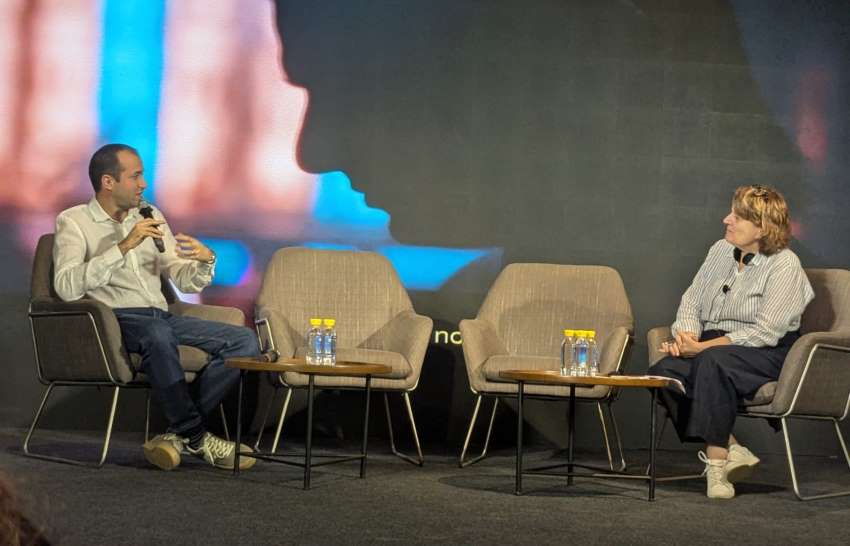FW
June PTA output of China was about 2,830 KT, down 86 KT month on month. With import volume expected to be 45 KT, China PTA supply may increase by 2,875 KT. As for demand, the output of polyester products totaled about 3,160kt, consuming 2,718kt of PTA, plus 80kt of PTA consumed in other applications as well as 100kt of PTA exports, PTA demand totaled about 2,900kt. Thus, PTA social inventory may decrease by about 20-30 KT.
As to supply side, few PTA plants have turnaround plans for July. Jialong put its 600kta PTA unit under maintenance while Hanbang, Mitsubishi and Urumqi plan to restart their units. With Jul PX ACP settled at $800/mt, PTA margins recovered and if Yisheng postpone or cancel the turnaround plan of the 2.25 million unit, PTA output of July may reach up to 2.9-2.95 million tons. If Yisheng sticks to the plan, PTA output shall be around 2.8-2.85 million tons.
As to the demand side, polyester operating rate is at 82 per cent at the beginning of July. Based on concerns of G20 regulation and firm crude oil market, plants kept steady operations. Assume average polyester operating rate at 80%, PTA inventory may increase somewhat.
Judging by latest data, total inventory in warehouse, port and plants remained stable. Warehouse inventory stayed high but plant inventory was at a medium-to-low level except for a few ample-supply plants.
Brandix CEO Ashroff Omar has said that the Sri Lankan apparel sector has room for further growth despite the country reaching middle income status.
He highlighted some of the intrinsic advantages of the apparel industry in the country as a tool for growth and provincial development and stressed the importance of viewing Sri Lanka’s position from a South Asian regional perspective in order to compete effectively in an evolving global market.
The CEO maintained that Sri Lanka’s productivity, skilled labour force, logistics offering and compliance with key sustainability and labour practices, positioned the country as the ideal location to become a hub for the region. He further called for an enabling policy environment and an investment climate to make this vision a reality.
Omar was speaking at the inaugural session of ‘InsideTrack,’ an exclusive, invitation-only series featuring veterans of Sri Lanka’s business, policy-making and development landscape, organised by Asia Securities, one of Sri Lanka’s leading stock broking and research firms. This particular session focused on the topic ‘How will the Apparel & Textile sector evolve in the next 3-5 years?’ He pointed out that the European Union (EU), as a region, was the world’s second largest exporter of apparel, second only to China with a share of 26.3% in 2014. As such, he contended with the view that the apparel industry could not support high-paying jobs was a myth.
Given Sri Lanka’s niche positioning as a high quality supplier, he opined that the country could position itself higher on the value chain, as an apparel hub of the South Asian region. He also showcased statistics that the growth in the apparel industry will continue, boosted by population growth and rising affluence. Accordingly, the global apparel industry, if it continues at the current pace of growth, will reach $ 834 billion in 2030 from $ 483 billion in 2014. Brandix CEO Ashroff Omar foresees apparel sector maintaining strong growth momentum.
According to Omar, the South Asian region possesses the intrinsic advantages of having the largest population, largest cotton and is a textile base and a skilled talent pool which could enable it to become the leading sourcing region for the world’s top apparel brands.
Despite some kind of uneasiness in the first few months of the Sirisena Wickremesinghe regime, economic relations between China-Sri Lanka seems to be heading for a dynamic growth. All this due to a realistic reassessment of bilateral relations by both sides facilitated by an exchange of high level visits in the gone by year.
The spirit of the new era was best expressed by the visiting Chinese Foreign Minister, Wang Yi, when he averred that he felt overwhelmed by the welcome he received on his first ever visit to Lanka.
That the Lankans were serious about putting the relationship on a new footing in which trade and investment will be defining factors, was clear from the participation of Finance Minister Ravi Karunanayake and Strategic Development and International Trade Minister Malik Samarwickrama, in the discussions which Foreign Minister Mangala Samaraweera had with Wang Yi.
Samarawickrama and Karnanayake not only discussed the existing and future Chinese aided projects, but also talked on measures to ensure that future Chinese funded projects do not suffer from the flaws seen in the earlier ones negotiated during the regime of President Mahinda Rajapaksa.
While Wang Yi spoke of China’s interest in further investments in the field of infrastructure development, ports and communication, as part of its global 21st.Century Maritime Silk Road project, the Lankan Ministers expressed keenness to increase Lankan exports to China through an early conclusion of a Free Trade Agreement (FTA), and to get Chinese investments to make Lanka an economic hub in the Indian Ocean.
Samaraweera said that the Lankan hub could have a conjunction with the Maritime Silk Road project, as the latter also envisages hinterland development. It is therefore certain that work on the stalled US$ 1.4 billion Chinese funded Colombo Port City will be resumed in right earnest.
While the Chinese have not been very vocal about entering into a FTA with Lanka, the Lankans are pushing for it, egged on by Colombo-based think tanks which see bright prospects for Lankan exports if the deal is well negotiated safeguarding interests of a much smaller Lankan economy.
Swift action by National Garment Workers Federation (NGWF), the Bangladeshi affiliate of IndustriALL Global Union, along with workers of Tejgaon Textile Limited (TTL) and Ananta Apparels Limited and Ananta Fashion Limited helped score significant victories for the labour class.
About 800 workers including 450 women workers of TTL faced a crisis situation as the factory owner had decided to close it down following inspections by the ACCORD & Alliance which detected a major structural fault in the factory building posing a threat to workers safety. The decision was made during the Eid-ul-Fitr festival season with no assurance to workers regarding compensation and festival bonus.
NGWF rapidly intervened in the matter and filed a complaint to the Bangladesh Garment Manufacturers and Exporters Association (BGMEA) and organized protest demonstrations demanding compensation to workers.
On 27 June last, after detailed discussions among representatives of BGMEA, TTL, NGWF and workers, a Memorandum of Understanding (MoU) was reached which included compensation to workers and an Eid Festival bonus. According to the NGWF, the management made the payment on 1 July 2016 in line with the MoU.
In another significant struggle at Ananta Apparels Limited and Ananta Fashion Limited, the NGWF led 6,000 workers to resist factory relocation and win a full Eid festival bonus. Both these garment factories belong to the same group and operated in the same building in Dhaka city. Following a unilateral decision by management to shift the factory 30 kilometers away from Dhaka city, workers faced losing their jobs if they could not relocate, increased transport costs and detrimental affects on their children’s education. They were also concerned that the management may not pay the Eid bonus.
Again the NGWF intervened and supported workers at both factories to file a grievance petition to BGMEA on 20 June, which was signed by 930 workers. Soon after, workers staged protest actions continuously for three days which successfully brought management to the negotiation table. Subsequently the management yielded to workers’ demands and announced that they would not relocate the factories and agreed to pay full Eid bonus. Workers were also successful in getting the management to sack a managerial staff member whose oppressive shop floor behaviour led to a pregnant worker delivering her baby prematurely.
A South African business delegation from a cross-section of key sectors of its economy would visit Zimbabwe later this year on a trade and investment mission.
The objective of this mission would be to increase trade and investment between South Africa and northern neighbor Zimbabwe. Trade between the two countries topped $ 4.2 billion last year.
According to South African’s Department of Trade and Industry (DTI), the country would sponsor selected entities looking to increase exports and services to Zimbabwe or seeking opportunities for investment.
There are a number of leading South African companies that have already established in Zimbabwe. Among them are Pretoria Portland Cement (PPC),Tongaat Hulets Zimbabwe, Old Mutual Zimbabwe, MBCA Bank, Pick n’ Pay, Metallon Gold and Zimplats.
Further, South Africa is Zimbabwe’s biggest trading partner while Zimbabwe ranks among the top three major trading partners of South Africa. About 70 per cent of Zimbabwe’s export go to South Africa.
Companies qualifying for sponsorship on the trade and investment mission will be drawn from agriculture and agric-processing, infrastructure, engineering, energy, mining and capital equipment, textile, leather, footwear and electro technical sectors.
According to the DTI, this measure will present an ideal platform for South African companies that would like to export value-added products and services and for companies that are looking for investment opportunities and joint venture partnerships in the aforesaid market.
The Department has notified that companies will be screened and selected in line with the guidelines and market requirements of the Export Marketing and Investment Assistance (EMIA).
The objective of this mission is to increase trade and investment between South Africa and northern neighbor Zimbabwe. Trade between the two countries topped $4,2 billion last year.
The Department also said that it would provide hotel accommodation on bed-and-breakfast basis; an economy class return airfare to a maximum of R17,000 and freight/excess luggage up to R2,000 to approved firms.
Zimbabwe requires significant investment in various sectors of the economy to increase the amount and value of exports as it has consistently been recording trade deficits over the past two decades.
"As China is losing its cost advantage, foreign firms are starting to look at Asean as a more attractive destination. China's competitiveness is eroded by lower labour costs in Thailand and emerging Southeast Asian economies, prompting a growing number of businesses to relocate their production from the mainland to Asean. "

As China is losing its cost advantage, foreign firms are starting to look at Asean as a more attractive destination. China's competitiveness is eroded by lower labour costs in Thailand and emerging Southeast Asian economies, prompting a growing number of businesses to relocate their production from the mainland to Asean.
What is less known is that managerial and professional salaries in China have also been climbing, even though the trend in location shifts has been clear for a few years and this has become a factor in some investors' decisions about where to set up production.

Base salaries in Thailand and emerging economies in Asean are now substantially lower than those in mainland China, reveals a recent research by the global advisory and broking company Willis Towers Watson. Thailand and Malaysia are the lowest payers at the top management and senior management levels, respectively. Also, Thailand offers more attractive average pay rates across the professional, middle and senior management levels.
Advantage Asean
Pichpajee Saichuae, MD of Willis Towers Watson Thailand feels labour cost is no longer a strong selling point for China, while it continues to encourage foreign investment. Nowadays, all Asean countries are cheaper than China in terms of salaries and overall labour cost, making these countries more attractive to foreign investors. Among Asean countries, Thailand provides significant advantages in terms of human resources costs compared to its Asian peers. This is an important element that might push a number of international companies to reconsider where to relocate their operations in Asia.
Said Rolf-Dieter Daniel, president of the European Association for Business and Commerce (EABC), manufacturing costs in China have been on the increase for many years, especially in the coastal cities where most industrial estates are situated. As China is losing its cost advantage, foreign firms are starting to look at Asean as a more attractive destination. For labour-intensive industries, coastal Chinese cities have been trying to position themselves by upgrading their technology to reduce costs and improve quality. Many Chinese firms, for instance, are acquiring German high-tech companies for these purposes, he added.
Rising salaries a bug bear

Meanwhile, in management and professional fields, base salaries across all job grades in China are now between 47 per cent and 65 per cent higher than in Thailand and up to 44 per cent higher than in Indonesia, according to the 2015-16 Global 50 Remuneration Planning Report by Willis Towers Watson. The report shows average base salaries at the professional and management levels in Vietnam and the Philippines are the lowest in Asean. Indonesia stands out among the 10-country group's emerging economies for having the highest base salaries.
On the other hand, base salaries in Singapore, a developed economy, are far more than in Greater China and emerging Asean. Compared to Thailand, base salaries across all job levels in Singapore are higher than those in Thailand in a range of 97 per cent to 228 per cent. Across the job grade from professional level to top management, Singapore's base salaries are 3-10 per cent higher than those of Hong Kong, which is the highest paying economy in Greater China. In Greater China, Hong Kong has long been the hub for international talent. Its gap with Singapore narrows once Hong Kong's more favourable tax rates are taken into account. China's base salaries are likely to stay high to attract talent given that the country is putting greater emphasis on quality and sustainability in its products and services. Moreover, the integration of its financial markets with the rest of the world means that salaries in that sector will need to globally competitive to attract and retain the best talent.
Meanwhile, China is focusing more on R&D and higher-end, value-added production, which requires a higher skill-set. For that reason, along with proximity to other parts of the supply chain, its more mature infrastructure and skilled workforce will likely continue to attract companies, particularly when compared with emerging economies, even though China is more expensive.
High living costs
According to Stanley Kang, CEO of Taiwan-based Tuntex Textile (Thailand), as living costs have climbed sharply in China's big cities, wages have to be increased to catch up, for both blue-collar and white-collar workers. Land prices have also risen, resulting in higher costs for factory operators. Many Chinese do not want to live in big cities anymore because they cannot cope with higher living costs and thus move back to their hometowns, he added.
Meanwhile, Indonesia and Vietnam offer an abundant supply of labour with a competitive cost, said Kang. Companies in Vietnam also can still enjoy preferential tariffs including the Generalised System of Preferences (GSP) for exporting to the European Union (EU). The Trans-Pacific Partnership (TPP), if fully ratified, will pave the way for more exports from Vietnam to other member countries, especially the United States. That will give Vietnam a further competitive advantage.
Four Uzbek nationals have filed a complaint against the World Bank's private sector arm, charging that a $40 million loan to an Uzbek textile company risked stoking the practice of forced labour in the central Asian country's cotton fields. The complaint filed with the International Finance Corporation (IFC) demands an investigation into forced labour related to Uzbekistan-based Indorama Kokand Textile.
According to human rights groups, Uzbekistan operates a massive, state-orchestrated forced labour system that underpins its position as the world's fifth-largest cotton exporter.
The U.S. government's annual report on human trafficking, published recently, said Uzbek government-compelled forced labour of adults remained endemic in the 2015 cotton harvest. The complaint to an IFC ombudsman made public the charges that the private lending group does not have adequate mitigation measures to ensure its investments and are not supporting forced labour.
According to its website, the IFC, which invests in developing the private sector in emerging economies, approved the loan of up to $40 million to Indorama Kokand Textile in December 2015.
The loan aims to finance the expansion of a cotton plant in the Uzbek city of Kokan, the website said, with a view of encouraging exports. Indorama Kokand Textile, a leading cotton producer in Uzbekistan, says on its website that more 90 per cent of its production is for export to Latin America, Europe, Bangladesh, former Soviet countries as well as Turkey.
The sun came out for Texprint’s London 2016 preview (July 6-7) at Chelsea College of Arts, reflecting the upbeat, optimistic collections on display.
Nearly 200 young names, all recently graduated from BA and MA textiles and textiles-related courses throughout the UK, were interviewed through June. From a 13-day marathon of interviews led by Texprint creative director Peter Ring-Lefevre, 24 names were chosen. Helen Howe, an American designer among those selected by Texprint, studied Knitted Textiles at London’s Royal College of Art.
Individual resilience and marketing acumen are talking points this year. In a fiercely competitive market, designers have to be able to explain and market their work effectively. Another talking point is the growing importance of digital skills. While hand drawn or painted expertise is rightly prized and valued, the modern textile designer needs to be digitally confident. Crimson Rose O’Shea, short-listed for the Texprint Pattern Award, evolved a two-step strategy in her own personal development.
From the final 24 designers, a panel of distinguished judges selects the Texprint award winners in four categories: Fashion, Interiors, Colour, and Pattern. The shortlist was announced on the same day, but the winners are not revealed until Première Vision in Paris on September 13 (the Texprint designers’ exhibit at Première Vision Designs, which is located within the main PV).
With the passing away of the peak demand period in China for fibers, prices of synthetic fibers used in apparel have started to dip in the Asian market.
Spot price of polyester filament which is used in shirts was $1.12 to $1.13 a kilogram at the end of June, 2-3% less than that in April. Polyester staple, which is used in futon filler, was priced at 81 cents per kilogram at the end of June down 10% in two months.
Prices of ethylene glycol and high-grade terephthalic acid have risen due to some plant stoppages since June. But with orders expected to remain weak until around September when demand related to spring and summer clothing lines typically picks up, prices are likely to remain sluggish.
In addition, psychological unease about a sluggish global economy in the wake of the U.K.'s decision to exit the European Union could further weaken prices.
The Clean Clothes Campaign and the International Labor Rights Forum are happy with the fact that a scheme set up by them to provide compensation to people affected by the Tazreen Fashions fire of 2012 has ended with the settlement of claims of survivors and also to the dependents of those who were killed in the fire.
The Tazreen Claims Administration Trust, which used a system for calculating and distributing awards based upon a similar initiative designed for those affected by the Rana Plaza building collapse, announced last Friday that the work to disburse claims, carry out medical assessments, calculate amounts owed to each beneficiary and distribute payments was complete.
It may be remembered that on 24 November, 2012 a fire ripped through the Tazreen Fashions garment factory in Bangladesh killing 113 workers and injuring nearly 200.
Three years later in September 2015, the Tazreen Claims Administration Trust was set up as a result of an agreement signed in 2014 by C&A, C&A Foundation, IndustriALL Global Union and the Clean Clothes Campaign. This agreement led to the establishment of the Tazreen Claims Administration Trust in October 2015.
In November 2015, $2.5 million was put into a fund set up to cover the cost of the awards by brands that sourced goods from Tazreen Fashions. The remainder of each award had already been provided through payments made in the immediate aftermath of the fire by the Bangladesh Prime Minister’s Fund.
C&A Foundation and Fung Foundation each contributed $1 million to the fund. Smaller funds were provided by Walmart (via BRAC USA), KiK and El Corte Ingles.












